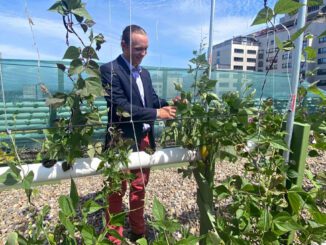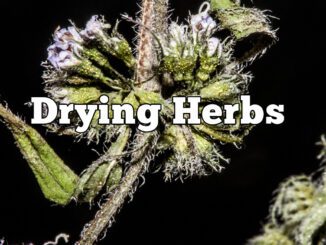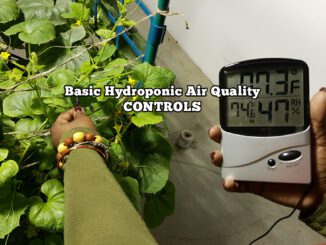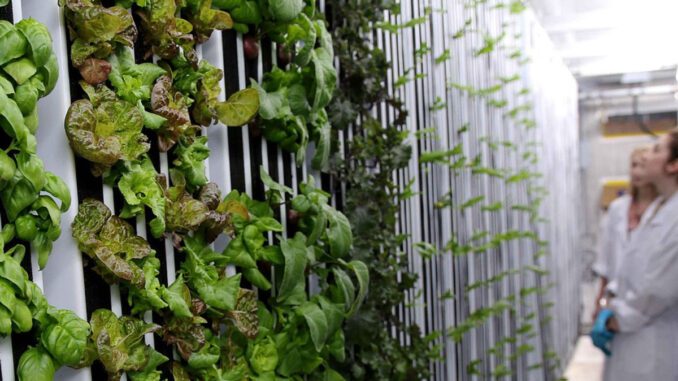
Salvation Army, JEA working toward hydroponic produce container Downtown
Salvation Army Indoor Farming | Karen Brune Mathis |
Downtown could be a site for a hydroponic container farm to grow kale initially, and additional produce later, for Salvation Army participants and its food pantry.
The Salvation Army of Northeast Florida and city utility JEA are working on a deal with Boston-based Freight Farms to grow produce in “a hydroponic, vertical farming environment” container called Greenery S.
Freight Farms would set up a shipping container “smart farm” on a vacant lot at the Salvation Army campus and shelter at 900 W. Adams St., at Adams, Lee, Davis and Houston streets.

Image: Maj. Keath Biggers, Northeast Florida Salvation Army area commander
Maj. Keath Biggers, Northeast Florida Salvation Army area commander, said it would be a way to grow produce for the organization’s kitchen to serve participants at its Tower Centers of Hope at 140 N. Davis St. and also for its food pantry.
“It is not a done deal. It is in negotiation, but we hope and pray we can make it work,” Biggers said Jan. 30.
He said the Salvation Army is talking about an agreement with JEA and then would need approvals from the Salvation Army’s divisional and corporate offices.
The JEA agreement would cover the responsibilities of the utility and the nonprofit, he said. The Salvation Army would need to arrange volunteers to operate the farm.
“We’re hopeful all the questions can be answered. Cost will be a factor but that could be accomplished with funding from a source,” he said.
He did not know the anticipated costs. The Freightfarms.com site says a Greenery S container costs about $149,000 along with a shipping fee and the costs of training and operation.

Image:A Freight Farms hydroponic container farm called Greenery S. Inside, produce is grown in “a hydroponic, vertical farming environment.”
Biggers said one container would fit on the site. “But it is a substantial yield of produce that if it is done correctly, it would be the first such one here in Jacksonville,” he said.
It also would be the first Salvation Army in the United States to have the program, he said.
“It is in the beginning stages and we pray it comes to fruition,” Biggers said.
He said it would “be a blessing to our participants and those in need of produce.”
The container would start with kale because Freight Farm starts its farms with it for the first two years, he said.
If successful, Biggers sees the possibility of growing lettuce, tomatoes and “whatever we can grow that would be a good garden salad.”
The goal is for the produce to be sustainable, client-friendly and nutritious, he said.
Biggers said that pending approvals, the container farm could be on-site this summer.
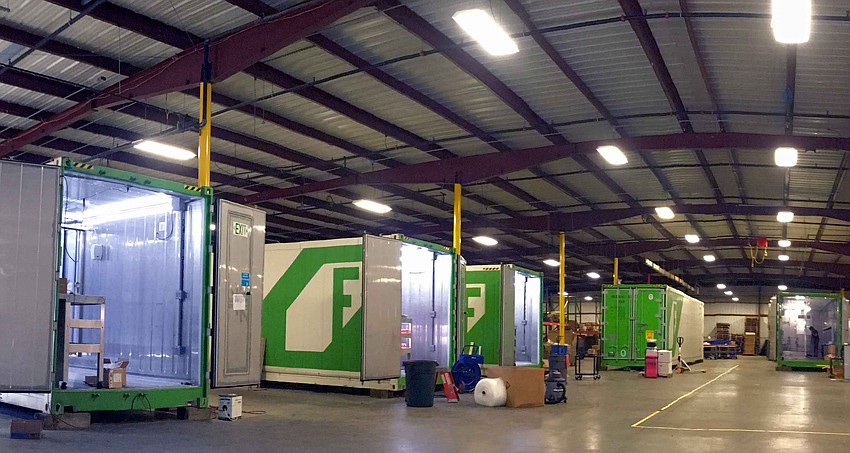
Image: The Freight Farms Greenery S is a soil-less, hydroponic farm in a shipping container that can be placed inside or outside.
“We want to make sure that if we go forward, we make sure it is done successfully and make it a great blessing to the community.”
The Salvation Army, which operates internationally, is an evangelical part of the universal Christian Church.
At the Towers Center of Hope at 900 W. Adams St., it provides dinner daily and Sunday breakfast for unsheltered homeless persons and the working poor.
It provides housing for single women and families and transitional housing for men.
Its food pantry at 140 N. Davis St. provides supplemental groceries to about 250 income-eligible households per week.
JEA’s role
JEA is participating in an Electric Power Research Institute project on an indoor food production facility at the Salvation Army site.
Karen McAllister, JEA director of content and media relations, said Freight Farms is the manufacturer of the container.
“JEA is working with the Salvation Army and EPRI to determine the best way to provide the electric and water services needed for the container,” she said Jan. 31.
McAllister said JEA does not have a firm timeline for the project “as we are still working on location as well as services to the container.”
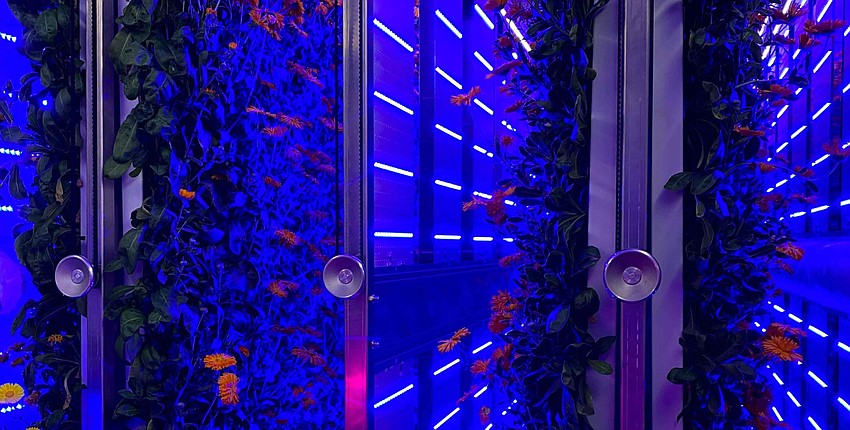
She said the research institute project objective is to expand utilities’ knowledge of indoor food production technologies; the potential societal and local impacts; and the potential energy, water and wastewater impacts.
She said the data collected for the project “is intended to inform electric load planning, water impacts, technological innovation and sustainable considerations around IFPs.”
JEA issued a service availability letter Jan. 18 for the project at the Salvation Army.
The JEA availability file shows the Freight Farms deal is part of the National Collaborative Container Project with the Electric Power Research Institute that encourages partnerships with the container farming between universities, schools, community gardens and organizations, governments, museums, culinary institutes and others.
The institute’s project engagement lasts about two years.
How it works
The container process was developed to grow produce in an interior environment with controlled temperature, humidity, lighting, irrigation and air circulation.
The Greenery S is a soil-less, hydroponic farm that uses water to deliver nutrients to plants. The system is a closed loop, using just 5 gallons of water a day to support more than 13,000 plants, according to Freight Farms.
Freight Farms says Greenery S “recreates acres-worth of farmland within a 40-foot container by using advanced vertical farming techniques to unlock every inch of growing space within the container’s four walls.”
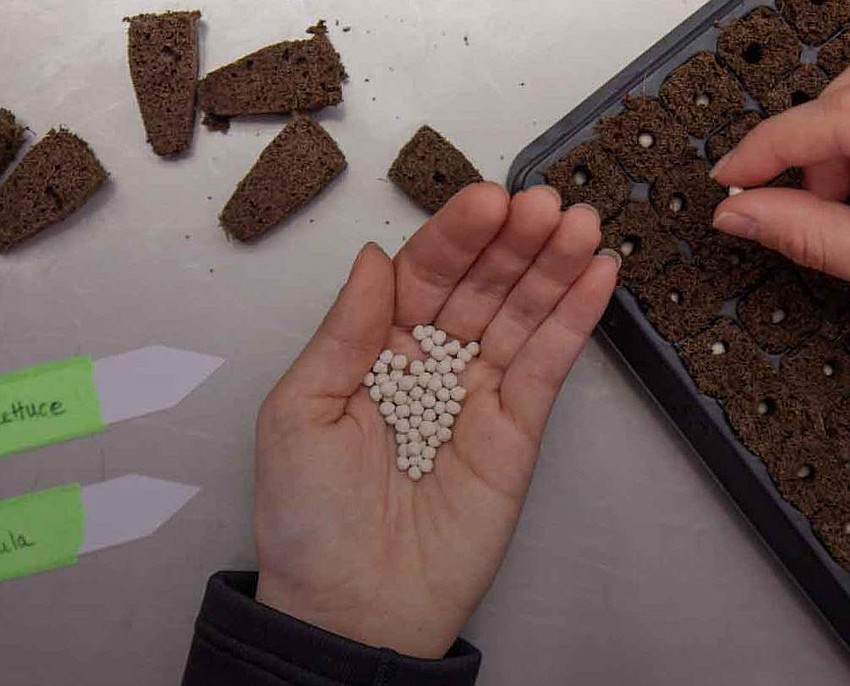
The 320-square-foot shipping containers can be turned into hubs for fresh produce, the company says.
The containers need at least a 500-square-foot site with access to electricity, water and internet services.
Farming starts with seeding plants into peat moss grow plugs and nutrients. Over two weeks, the sprouts develop into seedlings and need consistent access to water and light.
When sturdy, the seedlings are transplanted into a cultivation area for vertical growth in row or linear planting or intercropping.
The Greenery S insulation protects the interior climate, “making it possible to grow food in any conditions.”
“With no exposure to sudden temperature changes and protection from pests and plant disease, operators can produce high-quality crops with great flavor and no aesthetic flaws,” says Freight Farms.
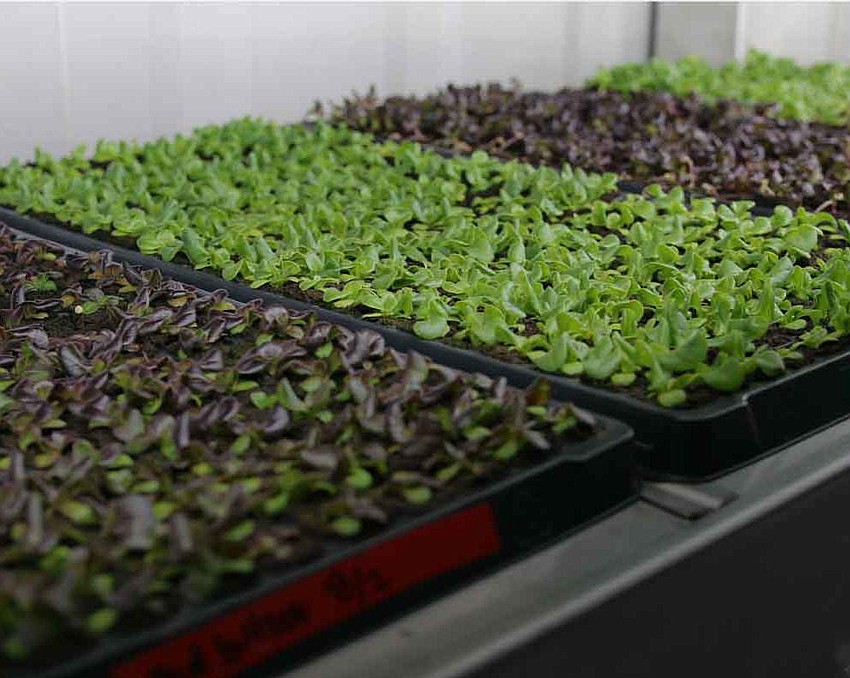
The light control can be used to “drive intense production, coax out interesting plant characteristics and much more.”
The LED lighting can enable plants to be harvested in weeks by creating 18-20-hour days of intense and optimal light, Freight Farms says.
When harvested, the produce is packaged and refrigerated for delivery or use.
It says that most Greenery S crops are consumed hours after harvesting, meaning “there is no time for nutrient degradation or wilting.”
The Freight Farms Greenery S system uses a performance tracking software system called Farmhand that sets and tracks the climate, light, water, nutrient conditions and production. Its cameras provide a view of the production.
About Freight Farms
Freight Farms says it pioneered the world’s first “container farm” in 2011. It says it now has more than 600 farms in 39 countries that provide access to fresh and healthy food to neighborhoods.
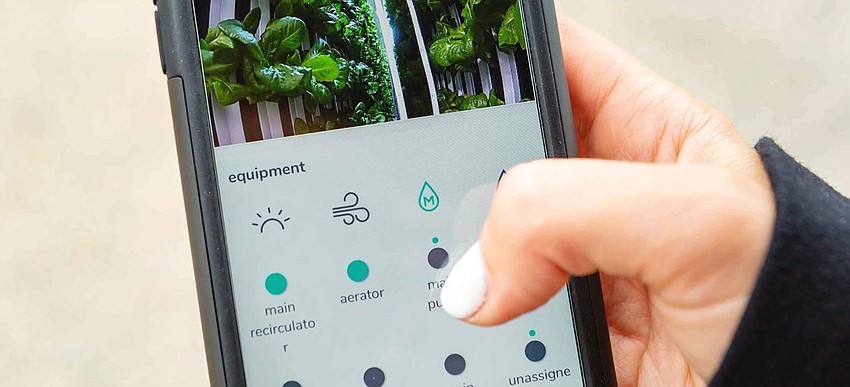
Freight Farms says it was incorporated in 2013 by Brad McNamara and Jon Friedman, who saw a need for urban agriculture to emerge as a competitive industry in the food landscape.
They began in 2010 by focusing on rooftop greenhouses, but realized they needed a modular and scalable solution, the company says.
To cut down on costs and logistics, the founders began to consider building their new technology inside shipping containers — which were widely available and would allow farms to exist in areas that could not support traditional agriculture.
“As a result, Freight Farms was born with the mission of building infrastructure and technology to allow local food to thrive.”
Original Article: https://www.jaxdailyrecord.com/news/2023/feb/06/salvation-army-jea-working-toward-hydroponic-produce-container-downtown/

